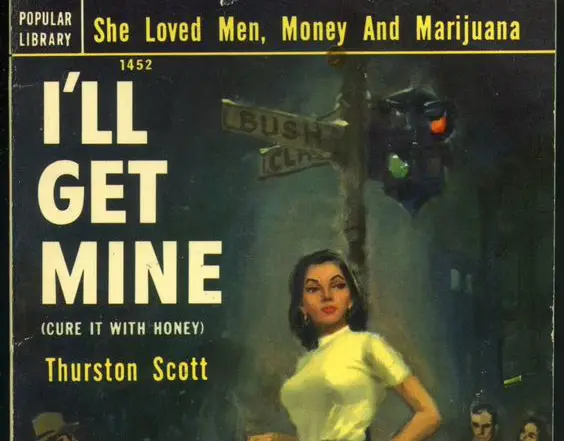On October 16, 1933, a schizophrenic teenager named Victor Licata killed his whole family. This could be one of the grisly stories we’ll talk, but it was a fact. It has to do with the cheap and sensational novels?
Okay, we have to start at the beginning.
The Pulp novels were very popular a genre of pulp fiction until the fifties of last twentieth century. Although born in the United States, it becomes popular in almost every country in around the world. The name “pulp” comes from the pulp of the paper they were printed.
They were a cheap way to have entertaining stories for just a few cents: Stories about gangsters, science fiction, cowboys, medieval age, or exotic adventures, and always related with sensationalism, eroticism, and a very easy narrative style that almost any person can follow without too many effort.
How to relate this with the murderer? And most important part… How does this link with cannabis ?.
Licata case was used by the press in those years to justify the prohibition of marijuana. Although the murderer was schizophrenic, the press began to link the horrible crime with cannabis by writing “The murderer was addicted to marijuana, and committed the crime after having smoked too much grass, almost taking overdose”.
Although today all these statements may seem ridiculous, the truth is that in the thirties, they aroused a debate in the United States. Entertainment producers, especially the entertainment industry, considered this issue as a new reef that could give them a lot of money.
The crime committed by Victor Licata was presented, along with scenes of assaults, suicides, violence and other characters in the infamous propaganda film “Reefer Madness,” released in 1936.
Pulp writers, especially the most mediocre ones, began receiving orders to write short stories.
Almost all novels that were published contained three types of narrative structure:
a) A young, confused and depressed girl, falls into the underworld, begins to smoke marijuana, and stars a frenzy race of orgies, sex, drugs, more orgies, more sex, more drugs, ending her story either in prison, in a convent, or dead.
b) A young man is abandoned by his wife, fired from work, threatened by the mafia, or even all three triggers at the same time. He becomes addicted to marijuana, alcohol, and perversion, and kills his wife under the influence of marijuana. Then he repents, cry, and commits suicide.
c) A group of very ugly gangsters wants to take the control over drug business and nightclubs in the city. To achieve their goal they deceive innocent girls and perverts them with marijuana. They are prostituting, and all caused (of course) by marijuana.
Although the arguments of these novels were ridiculous, we must admit that in the thirties, forties, and fifties until they had some popularity. But they was not as famous as many people think: The funny thing is that actually only twenty titles on crimes related to cannabis, or similar stories, were published during three decades.
Normal detective novels, for example, were released by the dozens every month by various publishers throughout the country. Cheap science fiction novels had hundreds of new titles just each year.
Today some of these novels, especially those related to marijuana, are very difficult to find and have become collectors’ items.










